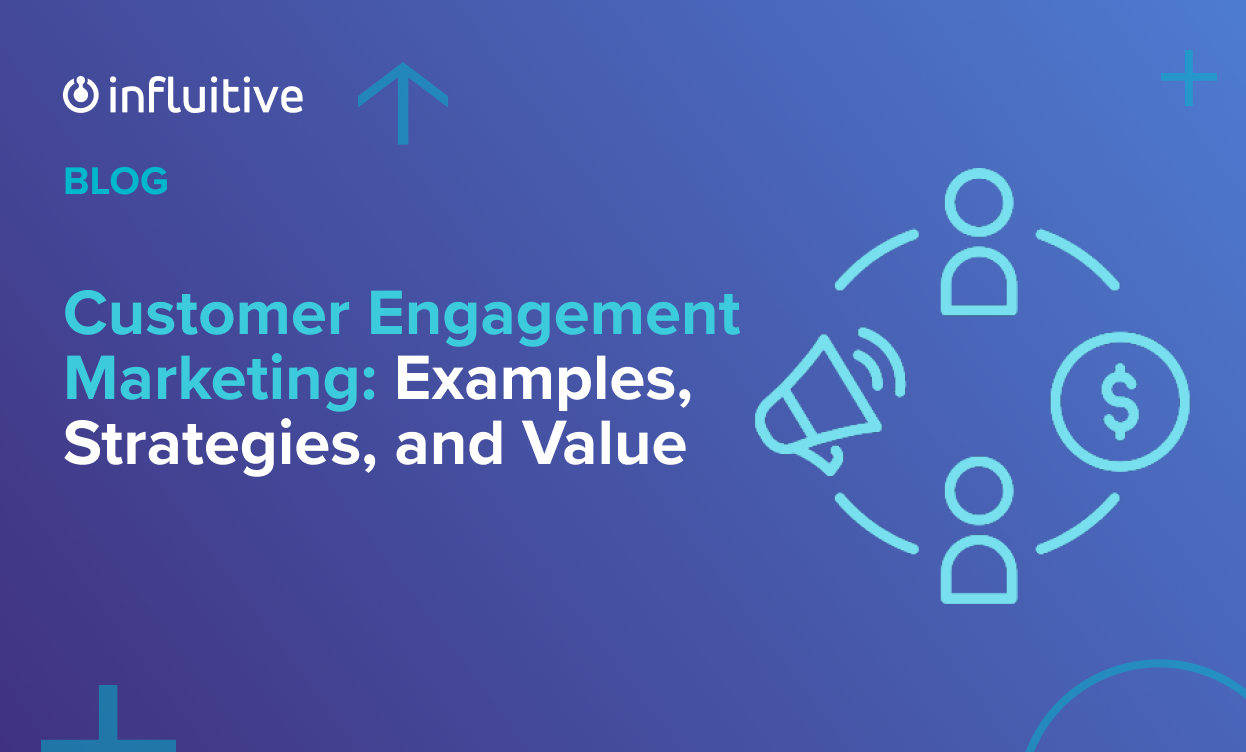Customer engagement, on the other hand, is proactive. It’s about anticipating what customers want and thinking about how to deliver content that serves their needs. Customer engagement marketing is the next step in that process.
In this post, we’ll explain what customer engagement marketing is, some examples of how it works, and the objectives it can help you achieve.
What Is Customer Engagement?
Customer engagement is the process of building relationships with customers. It includes direct communication, like interacting with customers on social media, but also indirect communication, such as customers communicating with each other in your branded online community.
What Is Customer Engagement Marketing?
Customer engagement marketing is the process of creating and deploying content and strategies for engaging customers. It’s not a short-term effort, but rather a long-term plan to build and grow your customer base by providing real value beyond your product or service.
It also requires a continuous communication loop — you need to gather data and feedback that helps you refine your processes. Making customers feel important, involved, and heard is the foundation for building brand loyalty and customer advocacy.
Customer Engagement Marketing Examples
Following are some of the engagement tactics enterprise brands use to build and grow their customer base:
Welcome emails
A welcome email is an opportunity to make a great first impression with new subscribers. Businesses can use welcome emails to demonstrate how to use a product, to offer a promotional discount, or introduce subscribers to products or features they might not know about.
A new customer may have immediate questions about logistics, like how to add a user to their account. Including key contact information in a welcome email can help new customers quickly resolve questions without having to search your site. You can also embed links to your social media profiles, should customers wish to connect with you there.
Personalized emails and site content
As you learn more about your customers and their individual preferences, you can personalize email content to let customers know about promotions, new product releases, or events that align with their interests.
Using a CRM and personalization tokens, you can customize webpages and landing pages for every customer. Personalization is one of the easiest ways to show that you’re paying attention.
Virtual events
A customer engagement marketing strategy that’s especially useful for B2B enterprises is hosting interactive virtual events. (That may sound complicated, but there are virtual services teams that can manage every aspect of your virtual event).
A virtual event should make attendees feel like they’re getting something in return, whether that’s industry-leading insights, the opportunity to network, or even a reward for simply showing up.
Loyalty programs
From simple programs that offer points for every purchase, to gamified experiences that reward customers for engagement, loyalty programs are a great way to build rapport with customers.
With the right customer loyalty software, you can easily build and manage loyalty programs that monitor and reward customer behaviors across every channel that matters. For example, you can reward customers for attending an in-person event, sharing your content on social media, referring a friend, and more.
Take your loyalty program to the next level by partnering with rewards fulfillment companies, so you can send gifts and swag to customers with no administrative hassle.
Customer stories
Marketers spend an average of six hours a day on administrative or process-based tasks, which leaves little time to create quality content. But when you invite customers to share their stories, you can generate authentic content with relatively little effort, as well as make customers feel like you value them.
Consider asking loyal customers to guest-blog, to be a source for a white paper, or to write a first-person case study about how your product solved a problem for them. When you publish a customer’s content, notify them and send them a link, so they can share it with their network.
In-app surveys
Invite customers to share feedback via in-app surveys. These can be as simple as a single-question net promoter score survey, or you can ask customers to review specific features and suggest improvements.
Customer communities
A customer community is a valuable resource, not only for engaging customers, but also for gathering business intelligence. For example, marketers can learn a lot about their products and services by observing customer discussions and common questions. It’s also easy to identify brand evangelists, based on which customers are most engaged in the community and answering others’ questions.
While some customers may use an online community only to look for specific information, others may find social value in a community, eagerly interact with a brand, and even serve as forum moderators.
What’s the Value of Customer Engagement Marketing?
Customer engagement marketing helps marketers achieve objectives with less day-to-day effort. Once you decide how to engage customers, and set up your strategies in a customer engagement platform, many incremental actions are automated. That means you can increase engagement at scale, and free up more time for long-term strategy planning.
With customer engagement marketing, you can:
Decrease churn rate
Disengaged customers — or those who never really learned the true value of your product — are more likely to churn than engaged and active users. With customer engagement tools like interactive onboarding and in-app surveys, you can ensure your customers are seeing value in your product from the start. You can also invite them to beta-test new features, then collect their feedback and show them how their input has shaped your product.
Increase social media reach
Your social media followers may be more than willing to share your content if you ask them. With a social media amplification tool, you can create shareable content and send automated, customized messages to your followers asking them to share it, with an easy share button for Facebook, LinkedIn, and X. Even better: Gather some user-generated content to share. Satisfied customers are the best form of social proof.
Understand the ROI of customer actions
What’s the value of a customer attending your branded event or authoring a blog post? Should you be focusing on other efforts? When you use software to track your customer engagement marketing strategies, you can see the dollar value of every customer engagement metric.
Engage Your Customers With Influitive
Even when you recognize the value of customer engagement marketing, the idea of putting it into practice may seem daunting. But with Influitive’s intuitive customer engagement platform, you can easily put your plans in motion. Influitive also offers virtual event services that can set you apart from your competitors.
Take a look at our customers who’ve gotten great results with Influitive. When you’re ready to explore whether Influitive is a good fit for your brand, schedule a walk-through.













































